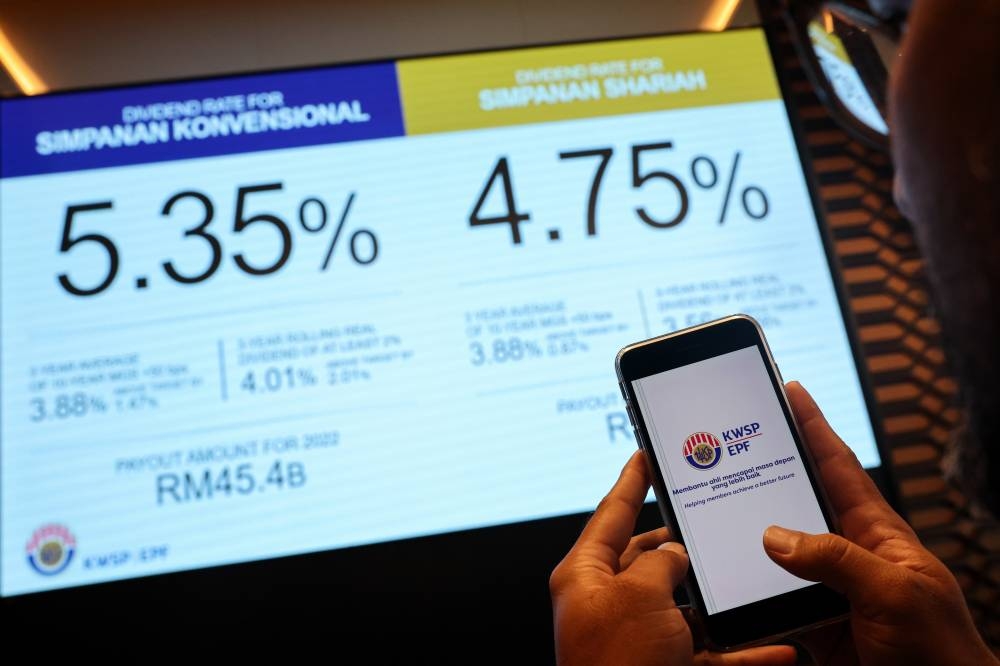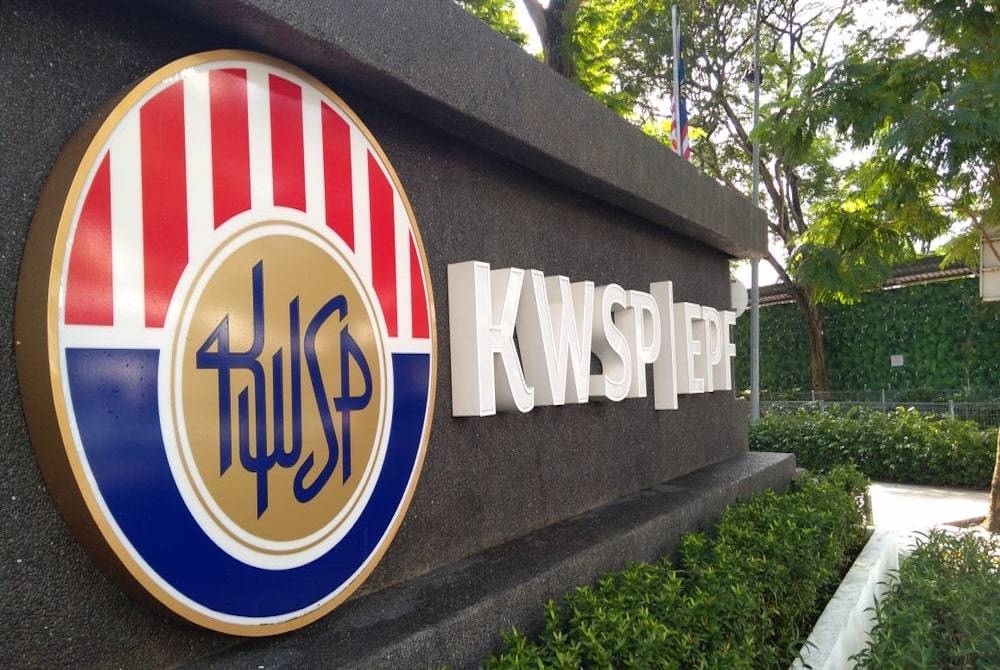EPF 2022 divided surpasses inflation rate: Economic experts
05 Mar 2023 10:59am

The EPF Board today announced a dividend rate of 5.35% for Simpanan Konvensional, with a total payout of RM45.44 billion and 4.75% for Simpanan Syariah with a total payout of RM 5.70 billion bringing the total payout amount for 2022 to RM 51.14 billion - BERNAMA

In an announcement yesterday, the EPF declared a dividend rate of 5.35 per cent for conventional savings for 2022 with a total payout of RM45.44 billion, while a 4.75 per cent dividend for shariah savings with a total payout of RM5.70 billion.
This brings the total payout amount for 2022 to RM51.14 billion, benefitting 15.72 million members.
In 2021, the EPF declared dividends of 6.1 per cent for conventional savings and 5.65 per cent for shariah savings.
However, the 2022 rate has beaten the 2020 dividends of 5.20 per cent (conventional) and 4.90 per cent (shariah).
Bank Muamalat Malaysia Bhd head of economics and market analysis Mohd Afzanizam Abdul Rashid said the 2022 dividend was not surprising considering that the financial market was badly hit by several shocks.
He said the sharp increase in the United States Federal Reserve (Fed) Fund Rate has taken many by surprise as the Fed chairman was of the view that rising inflation was transitory, but changed tact in 2022 and became hawkish in combating the inflation rate.
"The war in Ukraine, which began in February 2022, has led to food prices skyrocketing, effectively compounding the supply chain disruptions due to COVID-19.
"Despite all the calamities, the EPF managed to deliver a dividend that is above the inflation rate of 3.3 per cent in 2022 and higher than the 10-year Malaysian Government Securities (MGS) yields of 3.87 per cent at the end of last year,” he told Bernama.
Meanwhile, EPF chief executive officer Datuk Seri Amir Hamzah Azizan, during the 2022 financial performance briefing yesterday, said the competitive returns were largely due to the provident fund’s overarching strategy that emphasises long-term sustainability of investments and returns, in line with its strategic asset allocation (SAA).
As at Dec 31, 2022, the EPF recorded a lower total gross investment income of RM55.33 billion, compared to RM68.89 billion in 2021, driven by high market volatility and lower valuations across equity and fixed-income markets.
Positive growth of EPF memberships
The EPF also reported a positive rebound in member registrations following the robust recovery in the Malaysian labour market, and this helped the fund record strong growth of new member registrations of 635,989 in 2022.
Nevertheless, the percentage of active members in the total labour force is still relatively low in comparison to the level of old-age social protection coverage globally.
As such, the EPF is rolling out initiatives and ramping up efforts to increase the coverage of the nation’s labour force to more than 60 per cent.
One of the ongoing efforts in widening the EPF coverage is through i-Saraan, which is designed to allow workers in the informal sector or with no formal income to save for their retirement with the EPF.
Commenting on the positive growth of EPF memberships, Mohd Afzanizam said this indicates that the improvement in the labour market is moving along with the higher number of EPF members.
"As more people get employed, the greater number of workers become EPF members. Such a notion is in line with the contribution received by the EPF.
"In a grand scheme of things, we should not be relying on one particular instrument in order to help Malaysians deal with their economic hardship,” Mohd Afzanizam explained.
He also noted that there are other instruments or policy tools that can help the average Malaysian such as cash transfers, grants, microfinancing schemes for micro small and medium enterprises, subsidies, price control, and capacity building via training and education.
"Perhaps, the government should list down what assistance which can be applied for each Malaysian.
"Meaning to say, how much financial assistance one could get on a per capita basis. That way, people can have a better idea of the extent of assistance that they could get from, among others, the federal government, state government and state religious councils,” he said.
More EPF withdrawals?
Mohd Afzanizam said there seems to be a lack of financial literacy among those who are asking for more EPF withdrawals.
"We need to understand that special withdrawals have led EPF to place more money in liquid assets such as money markets which do not give higher returns.
"This could affect the total investment returns which ultimately could have an impact on the dividend rate,” he said.
Mohd Afzanizam also said that when the money is kept with EPF, it will grow at a faster pace because the money will be compounded based on the larger sum as the previous balance, which includes the previous year’s principle, dividend plus the new contribution for the year.
"Once the money is out from EPF, the members will not be able to enjoy higher returns as the withdrawals will include the principle of the investments plus the returns,” said Mohd Afzanizam.
Amir Hamzah also stressed that the urgency of withdrawals is not something that the EPF supports and hopes that the government continue to support the "no more withdrawal” decision due to the lower savings recorded by the members.
RM500 government contribution
When tabling Budget 2023 on Feb 24, Prime Minister Datuk Seri Anwar Ibrahim announced that the government agreed to contribute RM500 to two million EPF members aged between 40 and 54 with less than RM10,000 in their Account 1, involving an allocation of almost RM1 billion.
Mohd Afzanizam said the amount does help although it may seem low.
"We have to take into account the compounding factor that will be enjoyed by the members as a result of the cash transfers.
"However, EPF members need to keep the money with EPF for as long as possible in order to enjoy the accumulated investment returns over a longer period,” he said.
He said people should not be looking at RM500 at the present time, as the future value of that RM500 will definitely go higher due to the constant dividend payout by EPF. - BERNAMA










